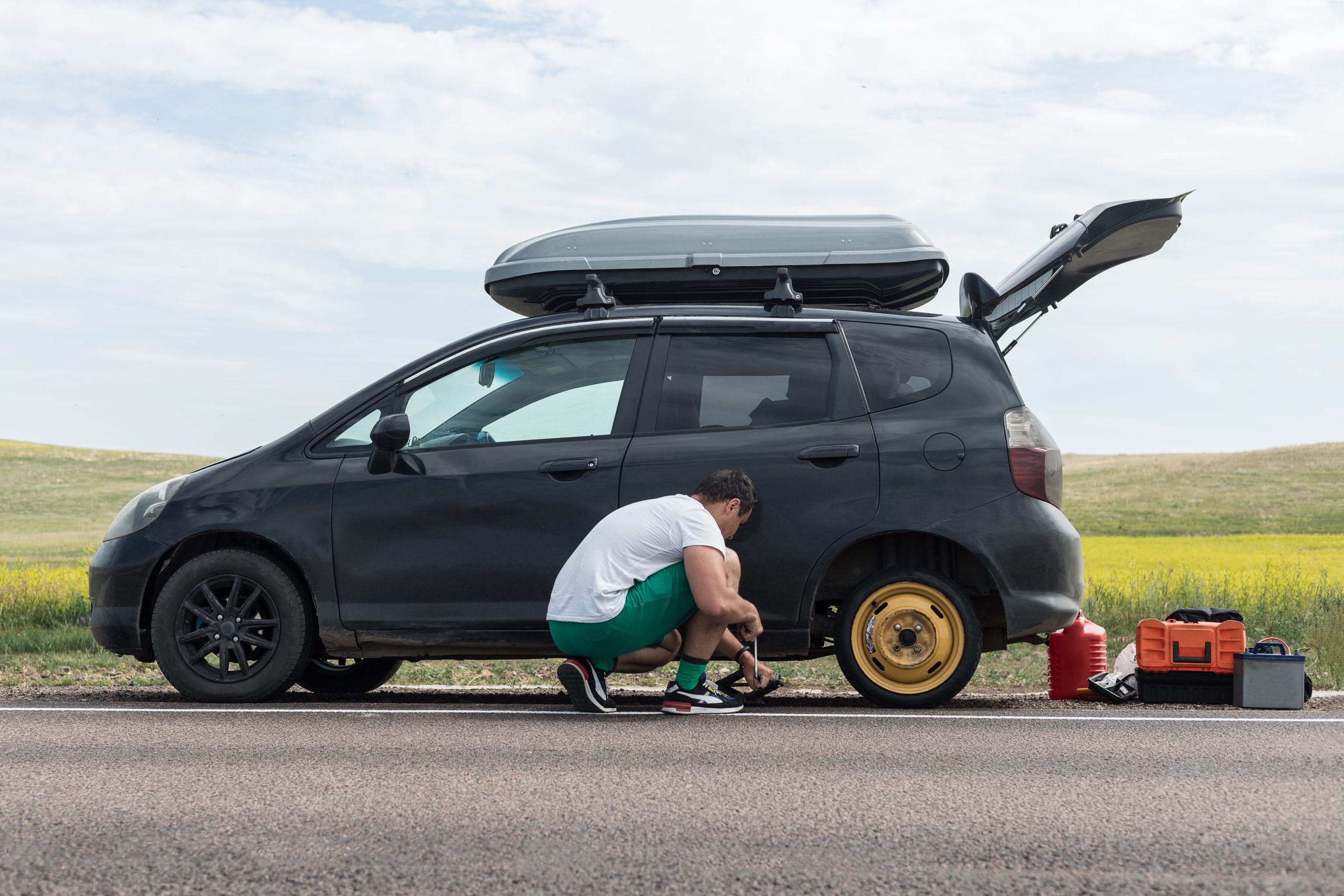

An unexpected flat tire can be a harrowing experience for any driver. From the safety concerns to the expense and inconvenience, a flat tire is no joking matter! What can be worse though, is not being prepared to fix the flat tire when it happens. In this month’s blog post, we share three proactive tips to stay prepared in the event of a flat tire.
Tip # 1 – The Spare Tire
If you have never had to access your flat tire, learn where it is stored in your vehicle and what type of spare your vehicle uses. Spare tires can be different types, depending on your vehicle year and manufacturer. In fact, many vehicle manufacturers are now producing some vehicles without a spare altogether. In these cases, they may provide the driver with a spray to temporarily fill the tire so that you can continue to drive until you can get the tire repaired or replaced.
The most common types of spare tires include:
- A full-sized replacement (may match the other tires or not)
- A compact temporary replacement (sometimes referred to as a donut)
- A full-sized temporary replacement
Except for the full-sized replacement tires, you should never drive on a spare tire for great distances or at high speeds. The rule of thumb is the 50/50 rule. Never drive over 50 miles in distance or over 50 mph while on a spare.
Once you know what type of spare tire you have, make sure it is fully inflated. Drivers tend to forget that the spare needs to have an air pressure check occasionally too. Check with your vehicle or tire manufacturer for pressure specifications, and make sure you check the pressure every 3-6 months. If you end up getting a flat and your spare is under-inflated, a flat spare tire will do you no good.
Tip # 2 – The Tools
Along with your spare tire, your vehicle should have all the necessary tools to assist with changing the tire. Again, if you do not have all the right tools, it may hinder you from changing the tire on your own. The tools that you should ensure are in the vehicle include:
- All the parts of the car jack
- A lug nut remover (functions as a hub cap remover too)
- Tire air pressure gauge
- Automatic tire inflator (optional)
- Rag and hand cleaner
Tip # 3 – Safety
Changing a tire on the side of the road is a hazardous task, and you should always be cautious. First, make sure that you pull far enough off the road so that you are in a safe spot to change the tire. It is always advisable to use other safety measures to alert drivers that may pass by while you are changing a tire. Safety equipment should include:
- Road flares
- Safety cones
- Brightly colored safety vest
- A flashlight with fresh batteries, in case you are changing your tire in the dark
As a backup to any flat tire situation, it is important that you have access to a roadside assistance service. Check with your vehicle manufacturer or insurance company to find out what may be offered to you as a complimentary service. If you do not have roadside assistance, consider purchasing service through AAA or other reliable sources.
It’s never fun to get a flat tire, but it does not have to become a more serious problem. Taking the time to be prepared can go a long way in keeping you and your vehicle occupants safe.
If you would like to have your spare tire checked out, contact the service professionals at Car Kings to schedule an appointment today.
